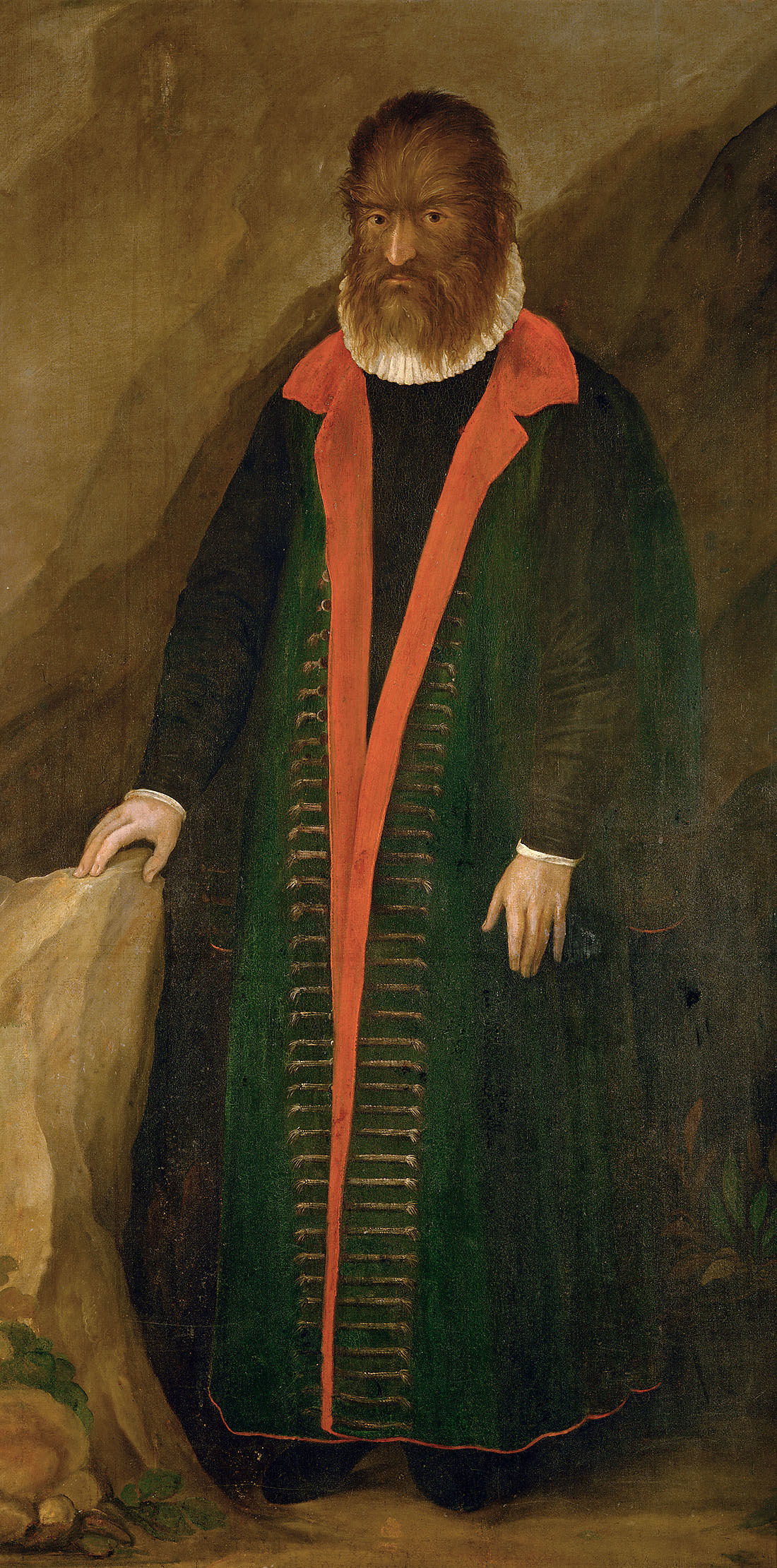Today we present our Hair Man thanks to Schloss Ambras Innsbruck, which is a branch of the Kunsthistorisches Museum Vienna.
The Ambraser Kunst- und Wunderkammer contains a total of three portraits of hair people. They represent father, son, and daughter, who all exhibit hypertrichosis universalis congenita, with their entire bodies covered with hair. Since 1993, this genetic change is referred to as Ambras syndrome due to the Ambraser portraits. Only the mother of the children, whose portrait is also in the Kunstkammer, does not exhibit this genetic change.
The hair man aroused much attention for a mixture of medical-natural scientific, mythological, and geographical-ethnological reasons. Pedro Gonzalez, the father, was born about 1550 on Tenerife and came as a child to the court of King Henry II of France (1547-1559), who educated and taught him. Later he was given as a gift to the governor of the Netherlands, Alessandro Farnese, who sent the family to Parma, where they served Alessandro's son, Duke Ranuccio.
The Ambras portraits were made around 1580 in Munich and probably arrived as a gift from the local dukes to Archduke Ferdinand II and thus to Ambras. For this reason, the father's portrait in Ambraser's inventory of 1621 is called Der Rauch man Zu Münichen (from the Middle High German word rûch, meaning wild, hairy). Munich designates here the provenance of the pictures, not the one of the Haarmen, who were never there. Because they were considered living Mirabilia, however, their portraits and reports about them were in great demand. The painter working in Munich probably never saw the sitter, but can only take the drawings of the heads as his model. This also explains why he has rendered the hands, which are really hairy, as hairless. The painter is also said to have borrowed from the Canary Islands the reports of the hair people. The indigenous people lived there according to contemporary representations in caves, and accordingly rock with cavities form the background of Ambraser portraits.
See other strange paintings in the article "These 5 Weird Portraits from Kunsthistorisches Museum Will Make You Wonder" on DailyArt Magazine.


 Unknown Artist
Unknown Artist